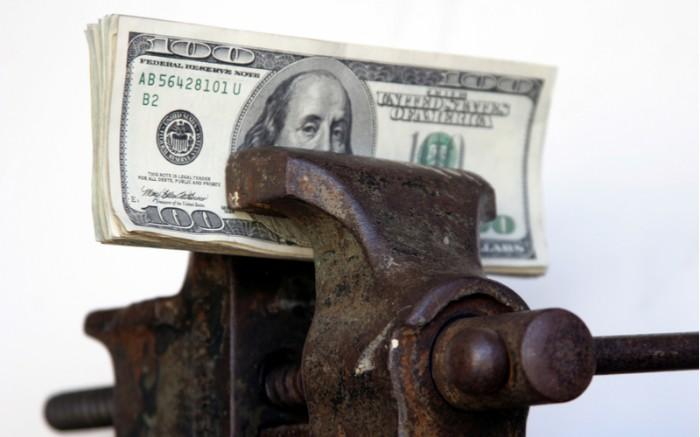What Is Tight Monetary Policy?
May 29, 2023 By Rick Novak
If you have been even remotely involved in the financial and economic world, at some point, you've probably heard of “tight monetary policy.” But do you know what it means?
Understanding the meaning and implications of tight monetary policy is essential for any individual or business looking to make informed decisions regarding their financial future.
Here, we will delve deeper into a confabulation about tight monetary policy, how it works, its effects on global markets, and why it matters for your finances. So let's get started!
Tight Monetary Policy - What Is It and How Does It Work

Tight monetary policy is a term used to describe a macroeconomic approach taken by central banks. It refers to the measures a central bank takes to decrease the money supply in an economy, thereby increasing interest rates and restricting credit availability.
This is done to control inflation, curb economic growth, and discourage speculation. It generally involves reducing the amount of money in circulation by increasing the reserve requirements for banks or tightening lending standards. This results in fewer loans being created, which can help to slow down economic growth and inflation.
The main objective of tight monetary policy is to check inflation and ensure it stays within an acceptable range. When inflation is too high, it can damage an economy as people will be reluctant to spend due to the rising prices. Keeping inflation in check helps maintain economic stability and keeps interest rates low.
Benefits of Tight Monetary Policy
Tight monetary policy can be a powerful tool for central banks to achieve their desired economic objectives. The main benefits of tight monetary policy are its ability to control inflation and stabilize the currency.
Control of Inflation
The central bank can reduce inflation by raising interest rates or reducing the amount of money in circulation. This helps to keep prices stable and promote economic growth.
Currency Stabilization
Using a tight monetary policy, a central bank can reduce the foreign exchange reserve held by other countries and thus make its currency more attractive to investors. This increases demand for that country's currency, resulting in higher value and better stability.
Promotion of Economic Growth
Tight monetary policy can encourage economic activity by increasing investment levels due to lower borrowing costs and stimulating consumer spending through lower interest rates.
This encourages businesses to hire new employees, invest more in research and development, and launch new products or services, all contributing to overall economic growth.
Drawbacks of Tight Monetary Policy

Effects on Interest Rates
Tight monetary policy increases interest rates, meaning businesses and individuals must pay more for loans. This can cause a decrease in both consumer and investment spending as the cost of borrowing money increases.
Additionally, higher interest rates can lead to a decline in stock prices since investors are less willing to purchase bonds due to the higher costs associated with them.
Inflationary Pressure
Economic activity slowing down due to tight monetary policy can lead to higher inflation levels. More money is available, but fewer goods and services are being produced. As a result, prices may rise faster than wages or other forms of income, leading to a decrease in purchasing power.
Impact on Currency
A tight monetary policy can also lead to an appreciation of the currency, which makes imports more expensive and exports cheaper. This can benefit domestic producers but may make it difficult for consumers to purchase foreign goods or services due to higher costs.
Additionally, this appreciation of the currency can hurt international trade and weaken the competitiveness of businesses in other countries that are not using tight monetary policies.
The Impact of Tight Monetary Policy on Economic Growth
Tight monetary policy, or contractionary monetary policy, is a macroeconomic tool that involves decreasing the total money supply in an economy by raising interest rates. This reduces loan availability and makes money more expensive to borrow. Consequently, it also lowers consumption and investment spending as people become less willing to take on debt.
While decreasing the money supply may negatively affect economic growth in the short run, tight monetary policy can benefit long-term stability. Curbing inflation helps maintain confidence in the currency and keeps prices consistent over time.
Additionally, reducing the money supply helps prevent excessive speculation of assets such as stocks and real estate that can lead to boom-and-bust cycles within economies.
Recent Examples of Tight Monetary Policies in Different Countries
Tight monetary policy is used to keep inflation in check by curbing the growth of the money supply. It does this by increasing interest rates, thereby raising the cost of borrowing for consumers and businesses. In other words, tight monetary policy makes borrowing money more difficult (and expensive).
This type of policy has recently been implemented in countries such as France, India, and Brazil, among others. In France, the European Central Bank raised its benchmark rate from 0% to 0.25%, expecting further increases over time.
Similarly, India has increased its repo rate - the rate at which banks borrow money from the central bank - four times since June 2018 to 6%.
Finally, Brazil increased its benchmark rate to 7.5% in late 2018 due to monetary tightening measures.
These policies were implemented to curb inflation and control the money supply growth. By making it more difficult for individuals and businesses to borrow large sums of money, these countries hope to contain price increases and ensure economic stability.
It's worth noting that tight monetary policy is often used as a short-term measure; when the desired effect has been achieved, central banks typically ease up on their policies by lowering interest rates again.
Long-Term Outlook for Tight Monetary Policies
Regarding money and economics, tight monetary policy is a decision by the Federal Reserve (or another central bank) to slow economic growth by making credit more expensive. This can be done either through raising interest rates or increasing reserve requirements.
A tightening of the money supply slows business investment and consumer spending, leading to slower economic growth.
The long-term effect of tight monetary policies depends on the context in which they are implemented and how successful they are at curbing inflationary pressures.
A tighter money supply can help regulate prices and create a healthier macroeconomic environment for businesses and consumers if implemented correctly.
On the other hand, tight monetary policies can hurt growth and increase unemployment if tightened too quickly or without consideration for underlying economic conditions. Understanding the potential long-term consequences of tight monetary policies is important to make an informed decision regarding your finances.
FAQs
What is the meaning of monetary tightening?
Monetary tightening (also referred to as a tight monetary policy) is a central bank's implementation of policies designed to reduce the money supply, raise interest rates, and slow economic growth.
What are the effects of tight monetary policy?
Tight monetary policy can affect different aspects of an economy in various ways. In the short term, it can reduce economic growth and consumer spending, as higher interest rates make it more expensive to borrow money. This could decrease investment, as businesses are less likely to take on new projects or expand operations. In the long term, higher interest rates can lead to an increase in savings and a decrease in inflation.
How is a tight monetary policy implemented?
The central bank typically implements tight monetary policy through multiple methods such as open market operations, reserve requirements, discount rates, and market operations.
Conclusion
A tight monetary policy is necessary for central banks to maintain stable economic growth and spur economic activity. While it comes with several advantages, such as reducing inflation and protecting people’s savings, there are also drawbacks to implementing tight monetary policies, like slow growth and higher unemployment rates.
Nonetheless, it's usually a preferable course of action compared to other forms of financial regulation. Additionally, the success of a policy depends on the particular circumstances in each country. Therefore, it is necessary to understand the basic concepts behind the tight monetary policy to fully grasp its advantages, disadvantages, and implications.








